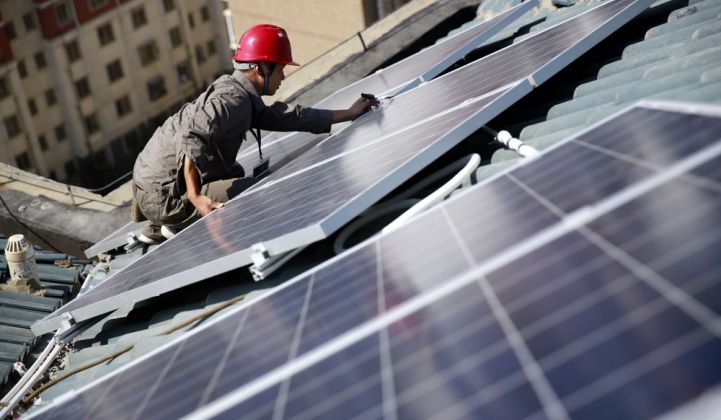The Asia-Pacific region is set to install 55 percent of all the world’s new PV in the next five years, new figures show.
The data, from Wood Mackenzie Power & Renewables, shows demand across the region holding steady over the next half decade, even though this year will see a dip in PV installation rates for the first time ever.
Cumulative capacity in Asia-Pacific, which includes Australia in WoodMac's analytical framework, will increase by 60 percent, from 222 gigawatts in 2017 to 578 gigawatts in 2023. China, India and Japan will together account for 78 percent of this capacity increase.

The countries will install 279 gigawatts of solar PV between 2018 and 2023. However, in the short term, these countries are seeing cuts in growth rate as a result of subsidy phaseouts.
As in Europe, markets across the APAC region are transitioning from feed-in tariffs to alternatives including competitive auctions, green certificate schemes and net metering plans. Moving from subsidies to auctions has helped to significantly cut costs for solar in the region.
In Thailand, for example, costs went down by 40 percent between 2016 and 2017, simply because of a move from feed-in tariffs to auctions. The phaseout in feed-in tariffs is, however, leading to diminished demand in several key markets, including China.
Demand in China is set to fall by 30 percent this year. Australia, the region’s second-largest solar market, is also expected to see diminishing demand from this year as a result of policy uncertainty.

Nevertheless, the market is expected to add 13.6 gigawatts of solar capacity through to 2023. The APAC dip will cause global solar demand to decline for the first time ever this year, dropping from 97.3 gigawatts in 2017 to 90.7 gigawatts in 2018, Wood Mackenzie estimates.
Demand, led by China, is set to pick up again from next year, although WoodMac foresees China’s dominance of the Asia-Pacific PV market diminishing over time as other countries ramp up installations.

Across the region, solar should be able to reach around 5 percent of total power demand by 2035.
“Solar capacity coming online is high, but because of its low capacity factors, the displacement in terms of generation is low,” said Wood Mackenzie solar analyst Rishab Shrestha on a press call this week.
PV is already cost-competitive with gas-fired generation, with merchant plants increasingly a feature of markets such as Australia, he said.
The levelized cost of energy (LCOE) of PV in the region is set to drop by a further 25 percent, on the back of a similar drop in capital costs, said Shrestha.
New installations across the region are expected to be evenly split between small-scale systems, of less than 5 megawatts, and larger plants. Around 15 percent of all installations are set to be under 20 kilowatts.
“There are a lot of rooftop auctions, particularly in India,” said Shrestha. “Those are driving demand.”

Alongside solar, Asia-Pacific is expected to see a twentyfold boom in offshore wind, putting the region on course to come close to Europe in terms of overall installed capacity, Wood Mackenzie’s figures show.
Growth in the region will be fueled by a roaring market in China, along with increasing growth in Taiwan, Japan, South Korea and India, which has the largest offshore wind installation target in Asia despite not having a single commercial project in the water today.
Planned APAC offshore wind installations will be almost exclusively in nearshore locations, with adoption driven by rapidly falling costs.
The LCOE for offshore wind is expected to fall by 44 percent between 2018 and 2023, said Wood Mackenzie senior analyst Robert Liew. Already the region was seeing bids that were cheaper than those in Europe, he said.

APAC is suited to offshore wind, he said, because of its long coastlines and economies that already have experience in maritime construction. Foreign developers are interested in the region but the markets in Asia-Pacific remain highly sensitive to pricing.
The development of some markets is still very much in the air. In Australia, for example, Liew said developers still have to make the case that they can compete with onshore wind.
Plus, the size of the projects under consideration in Australia means they will have to get approval from the federal government, which is not exactly known for its staunch support of renewables.
***
Learn more about Wood Mackenzie Power & Renewables' global solar research here.




